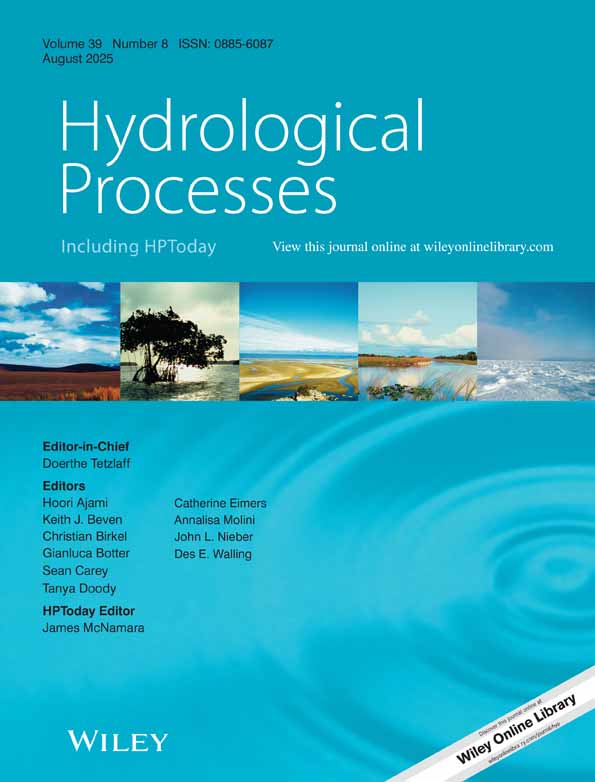Dynamical modelling of concentration–age–discharge in watersheds
Abstract
There is now a wide literature on the use of tracer age and transit time distributions to diagnose transport in environmental systems. Theories have been proposed using idealized tracer age modelling for ocean ventilation, atmospheric circulation, soil, stream and groundwater flow. Most approaches assume a steady flow regime and stationarity in the concentration (tracer) distribution function for age, although recent work shows that this is not a necessary assumption. In this paper, dynamic model for flow, concentration, and age in volume-averaged and a spatially distributed watershed system are derived in terms of the moments of the underlying distribution function for tracer age, time, and position. Several theoretical and practical issues are presented: (1) The low-order moments of the age distribution function are sufficient to construct a dynamical system for the mean age and concentration under steady or transient flow conditions. (2) Solutions to the coupled system of equations for flow, concentration and age show that ‘age’ of solutes stored within the watershed or leaving the watershed is a dynamic process which depends on flow variations as well as the solute or tracer dynamics. (3) Intermittency of wetting and drying cycles leads to an apparent increase in the tracer age in proportional to the duration of the ‘dry’ phase. (4) The question of how mobile/immobile flow may affect the age of solutes is examined by including a low permeable, passive store that relaxes the well-mixed assumption. (5). A spatially distributed advective and dispersive transport solution for age evolution over a simple 1-D hillslope is developed to demonstrate the age theory for a distributed source of water and tracer, and the solution is shown to have very similar input–output behaviour when compared to the volume-average model for comparable parameters. Copyright © 2010 John Wiley & Sons, Ltd.




